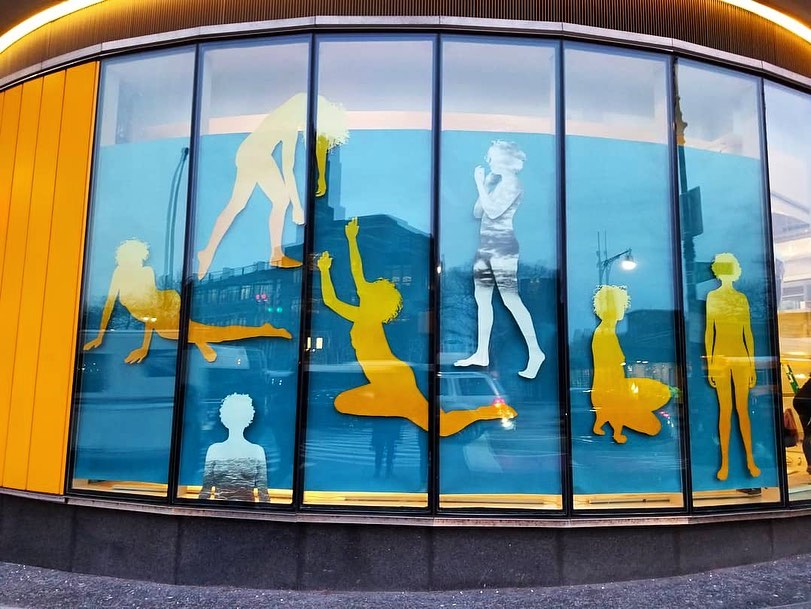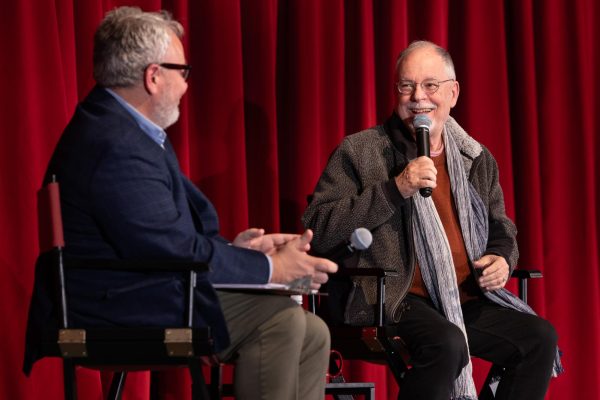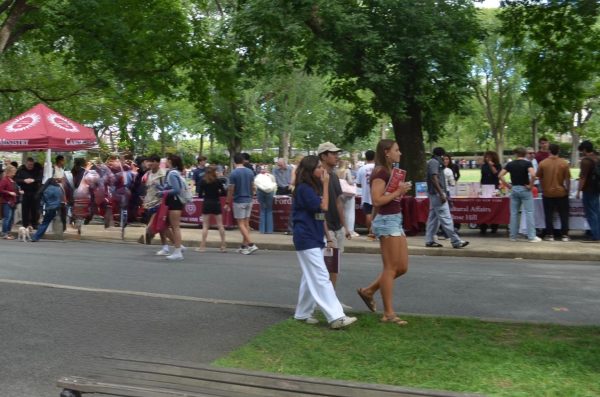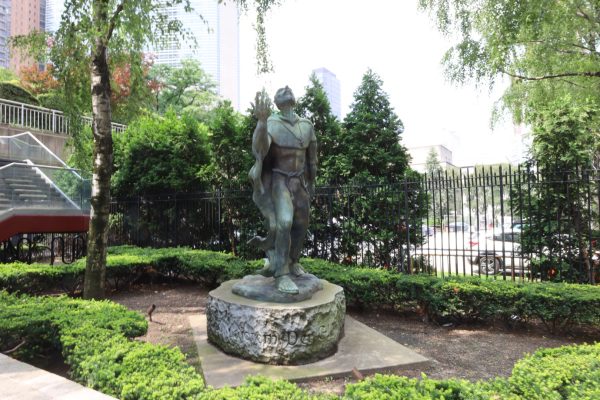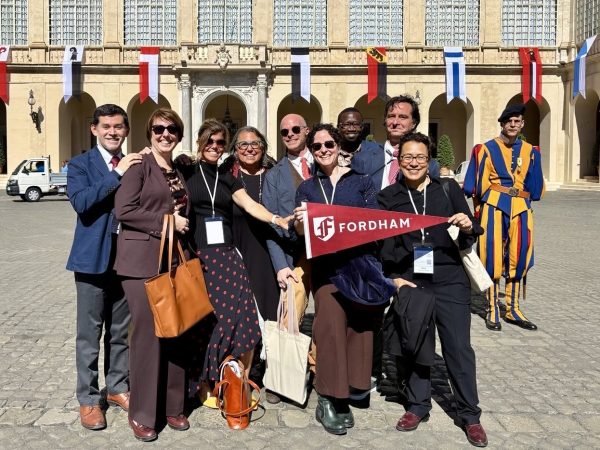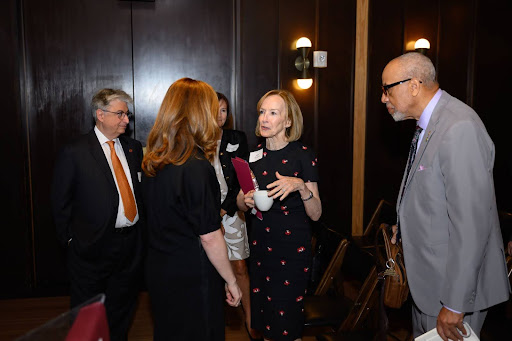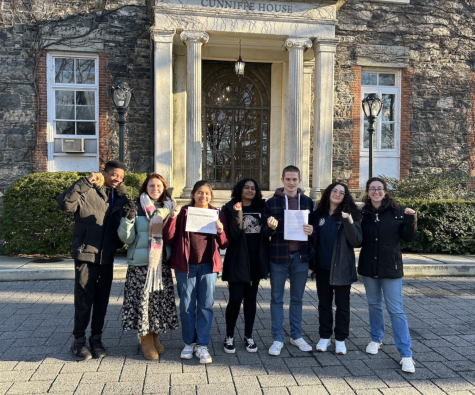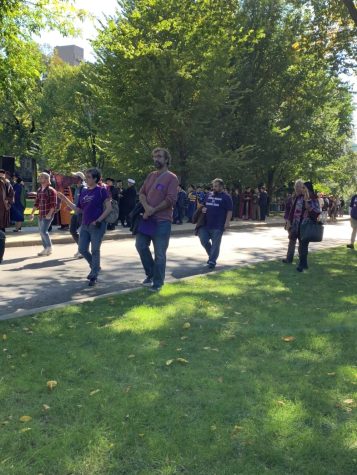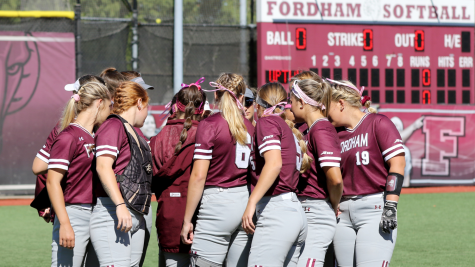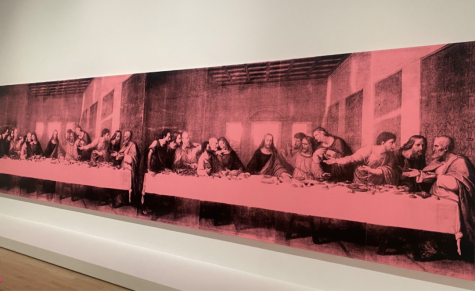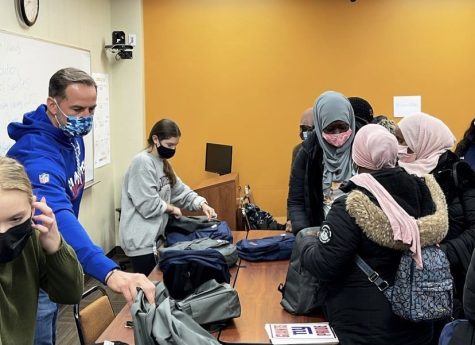Chashama Art Space Welcomes 25th Year
The word “chashama,” in Farsi, means “to have vision.” Vision is exactly what Anita Durst, founder and artistic director of Chashama Art Space, said she had when she created Chashama Art Space in 1995. This year, it turns 25.
Chashama has a space in Fordham Plaza, right across the street from Fordham University; the asymmetrical floor-to-ceiling glass building right above the entrance to Track 4 of the Metro North Railroad is one of three spaces in the Bronx. The Fordham Plaza location was created in collaboration with the Department of Transportation and was developed in partnership with Upper Borough artists.
The current window installations at Fordham Plaza were curated by Laura James, the independent founder and curator of the Bronx Visual Artist Directory BX200, and the Community Exhibition installation is in partnership with the Madison Square Boys & Girls Club. The project is called “Come Together” and features artists Chelsea Hrynick Browne, Annie Legnini and Diana Schmertz. Cayla Casciani, the Fordham Plaza programmer, organizes programs like book drives, art workshops and student visits for the location.
“She is a powerhouse who cares about her community,” Durst said about Casciani.
According to the website, Durst originally founded Chashama both as a tribute to “theatre visionary” Reza Abdoh and as a way to provide affordable spaces for artists, specifically in theatre, who needed it. However, it has since morphed into a much larger, more prolific organization located in four of the five boroughs of New York City (excluding Staten Island), Matawan, New Jersey and Pine Plains, New York. According to Emily Kohl-Mattingley, the facilities director of Chashama, it has also expanded its focus to all artists and creatives, including, but not limited to, performers, visual artists and writers.
“(Chashama) awards $9 million worth of real estate to artists, subsidizes 200 artist workspaces, provides over 200 free art classes and gives 170 artists free space to present,” read the website. Chashama partners with owners of unused space and then turns that real estate into “activated” space, as Durst calls it.
“I think creativity thrives in nurturing environments,” Durst said. “When an artist is stressed or feeling pressure, in a monetary sense, I think the work can suffer. Free or subsidized venues allow our artists to take a giant exhale and focus on the important issue, their art.”
Kohl-Mattingley said that several artists have other part-time jobs in addition to creating art. She said most of them are underpaid and potentially working without any job benefits or job security.
“From what I’ve observed as an artist myself, money means access — or not — to an art education, to museums, to art fairs, to a studio, to creative supplies, to personal time to be able to use those supplies in that studio,” said Kohl-Mattingley. “And on a very superficial level, being able to afford to do the previously mentioned items, and also being able to afford to be socially active, i.e. go to a local watering hole, to post a gallery opening, to network with other creatives, all cost money.”
She said that in order to obtain any kind of representation in the “Capital A” art world, you must be able to afford most of these things.
Durst said she believes that just having the visibility that Chashama provides can create a ripple effect that touches hundreds of people. She said that Chashama as an organization may create its own ripple effect.
“I see Chashama becoming a blueprint for other organizations around the country,” she said.
“Galleries and museums can alienate the viewership in underserved communities,” said Kohl-Mattingley. “Alongside artists such as Robert Rauschenberg, Jean-Michel Basquiat and Duchamp were millions of other artists who worked and created and inspired. Their names may not be written in the history books, and frankly, that is a failure of the art institutions, but they lived, they created and they helped make New York, New York.”
Thus, when Chashama provides spaces and studios and resources for reduced costs, it provides accessibility and equity in the art world. Chashama is simply “here to level the playing field,” said Kohl-Mattingley. Durst said she believes that they have done just that.
“We were once an artistic playground, cavorting and moving all over the city,” Durst said. “Now we are an artistic institution, stable with a strong network of supporters and collaborators.”
However, the world is currently facing COVID-19, and Kohl-Mattingley said that many artists are out of work because of the virus.
“Chashama asks that the Arts not be left out of the future of our city, because it simply would not be New York City without them,” she said.



































































































































































































